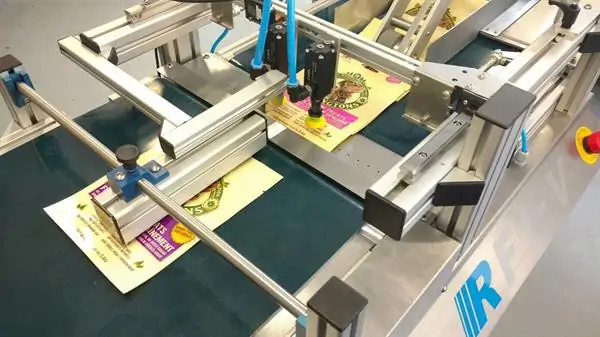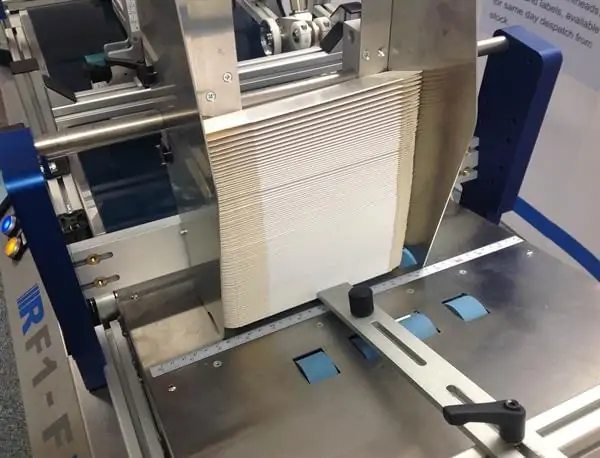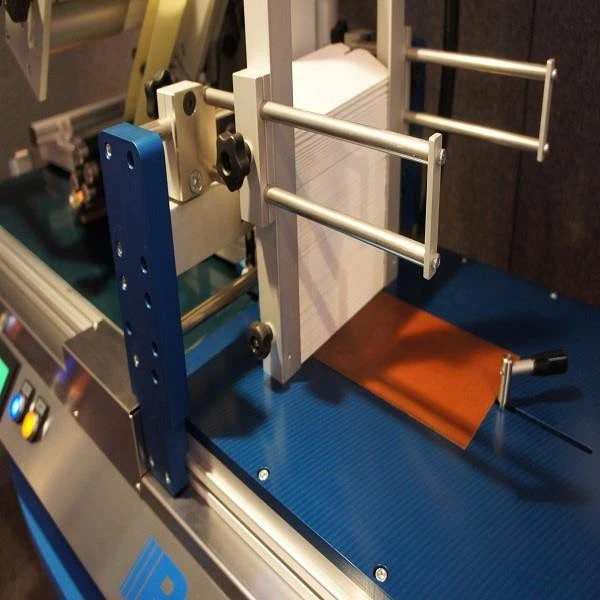When buying a new offline coding system, choosing the shiny new printer is usually where the attention is focused, while working out how the pack will be fed to that coder becomes an afterthought.
Yet the design of the feeding system is crucial to efficient, reliable and accurate code placement – a poorly designed or unsuitable feeder will result in frequent jams, misplaced codes, and – at worst – the inability to code certain pack formats and styles altogether.
All too often, coding equipment suppliers and integrators take a ‘one size fits all’ approach to offline feeding, and will tell customers that one type of feeder – usually the friction feeder – can be used for any offline coding application. It is true that the friction feeder is the most versatile type of feeder, but like other feeders, it has its strengths and its weaknesses, applications in which it excels and applications in which an alternative feeder design might prove more efficient.

Shuttle launch
On the friction feeder, a gating finger sits on a feed roller in such a way that when the rollers turn, the bottom pack from the stack is fed forward. This means there is plenty of flexibility on what can be fed – this system works on something as thin as an 80gsm sheet of paper right up to a folding carton made from thick board – as long as the substrate has a degree of stiffness so that it can be held in the stack. A plastic bag, for example, will collapse around the finger and will not, therefore be suitable for feeding via this method. Blister cards, cartons, seed packs, pouches and Tyvek lids are all well suited to friction feeding. One application where the friction feeder really comes into its own is where users want to print along the body of a carton using inkjet (inkjet only prints in the direction of travel), as the cartons can be fed flaps leading on a friction
feeder.
Fact or friction? 
We took the friction feeding concept to the next level with an innovation called the shuttle feeder. This is specifically geared towards the pharmaceutical industry, where performance is key and small pack sizes are common. This type of feeder uses a high speed shuttle plate to steer the bottom carton/sleeve from the stack and deliver it onto a transport conveyor. Whilst with friction feeders, the size of carton or wallet that can be fed is limited by the distance between the two sets of rollers, shuttle feeders are fully adjustable. The plate can be easily changed to accommodate different pack sizes and thicknesses, allowing users to switch between cartons of varying dimensions, including very small packs. A shuttle feeder is also preferable for Braille packs, as the friction method might cause the pack to drag or twist, affecting reliability.
Picking and placing problem packs
The third category of feeding system is the ‘pick and place’ or ‘vacuum’ feeder. Packs are picked from the stack using a set of vacuum suction cups, then placed on an integral conveyor where they can be printed and labelled prior to being stacked again. This system is generally the best option for ‘difficult to feed’ products that can’t be denested from the bottom of a stack. Potential applications include polybags, crashlock cartons, resealable pouches or doypacks and asymmetric products. With the rise of pouches, vacuum feeding is becoming more and more popular. When used in conjunction with a thermal transfer printer, this feeding technology is ideal for companies looking to overprint large amounts of variable information on pouches efficiently and cost-effectively.

Conveyor considerations
The conveyor is another element of a near-line coding system that is seldom given the consideration it deserves, given that it serves as both pack transporter and printer platform. Some systems use vacuum belts to transport packs from one stack to the other, but these are costly and complex. A universal belt conveyor is simpler to operate and maintain, and can accommodate any printer, labeller or inspection system.
If you can code it, we can feed it
Rotech believe firmly in the ‘one size doesn’t fit all’ approach. We have developed various methods of feeding and the overprinting systems in our RF range can, between them, feed pretty much any pack format, from blister cards to pouches, cartons, polybags and sleeves.

